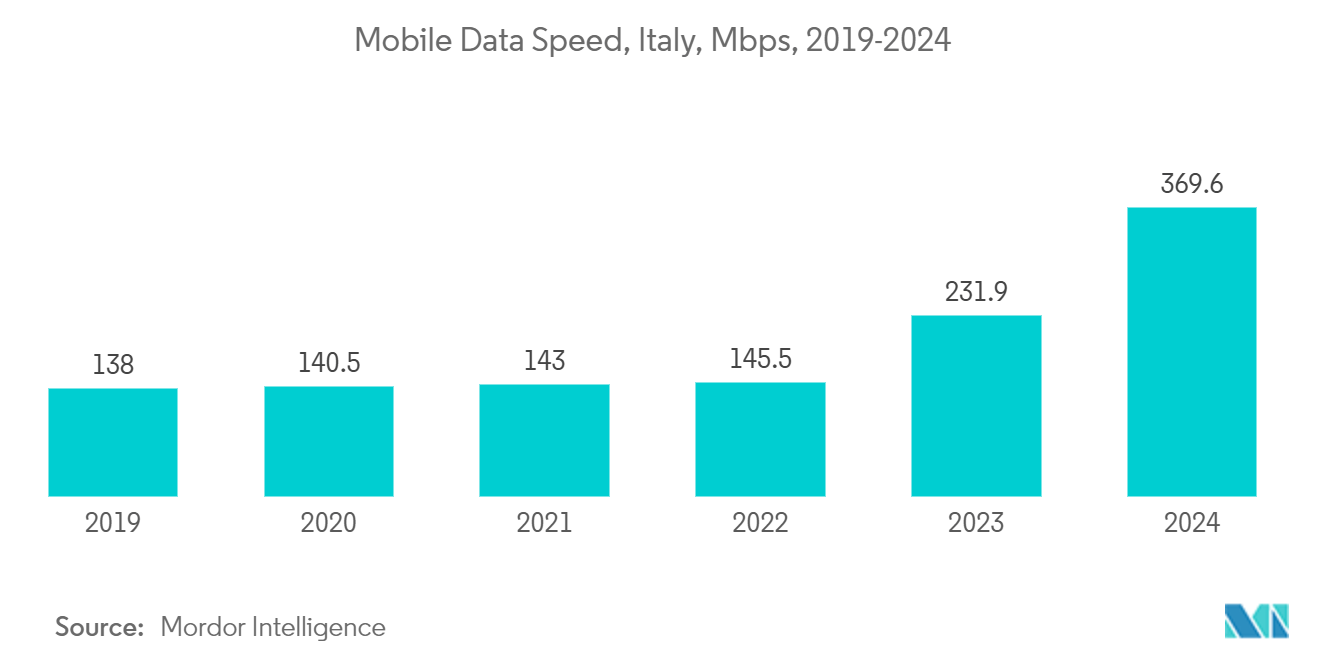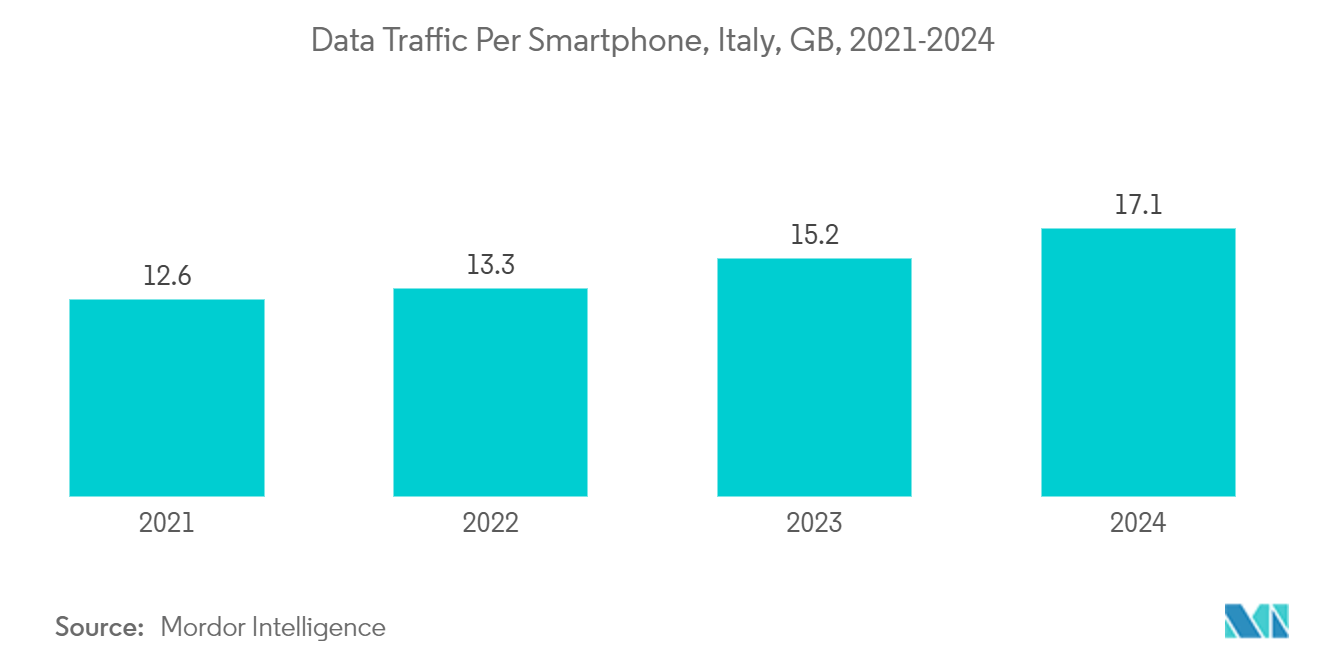Market Trends of Italy Data Center Cooling Industry
IT & Telecommunication Segment Holds the Major Share
- Cloud infrastructure enables companies to efficiently manage fluctuating demands while simultaneously reducing IT expenditures. This infrastructure offers the flexibility for employees across diverse geographical locations to access their files directly from the cloud. Key features driving businesses to adopt cloud services include enhanced scalability, flexibility, and the ability to manage website traffic fluctuations. Both businesses and government entities have increasingly turned to cloud services to bolster the country's digitization efforts. To further these efforts, the Italian government has earmarked a budget of approximately EUR 1.9 billion (USD 2 billion) over the next five years. Notably, with the Italian government's shift to cloud systems, taxpayers have reaped annual savings of about EUR 87 million (USD 92.25 million).
- Telecom companies are leveraging a hybrid cloud infrastructure, seamlessly integrating both public and private cloud services at different stages. This strategic approach enables them to adeptly manage traffic fluctuations and ensure peak performance. As a result, cloud services have empowered telecoms to enhance service deployment efficiency and minimize downtime.
- Between 2014 and 2023, the percentage of the Italian population with 4G mobile broadband coverage rose from 90% to 99.9%. Following the rollout of 5G technology in 2023, 99.5% of Italians had access to 5G broadband. Additionally, a memorandum of understanding has been signed by the Italian government, municipal authorities, and network operators TIM, Vodafone, INWIT, and Open Fiber. This agreement aims to expedite the deployment of fiber and 5G infrastructure nationwide and is set to remain effective until June 30, 2026, fostering enhanced collaboration among the parties. The surge in data consumption can be attributed to advancing 5G technology, online gaming, banking services, over-the-top (OTT) content, online shopping, and more. Such market dynamics are poised to boost demand for data center cooling infrastructure manufacturers in the years ahead.

Liquid-based Cooling is the Fastest Growing Cooling Technology
- Data centers are increasingly turning to liquid cooling as a preferred method for cooling high-performance computing environments. Compared to traditional air conditioning, liquid cooling proves to be more energy-efficient. By offering precise temperature control, it not only minimizes the need for overcooling but also enhances the overall energy efficiency of data centers.
- Thanks to technological advancements, data centers have reduced water consumption by over 15% in tropical climates and a staggering 80% in greener regions. This progress has made liquid cooling easier to maintain, scale, and afford. Moreover, energy harnessed from liquid cooling can be repurposed to heat buildings and provide drinking water. Additionally, the use of advanced artificial refrigerants significantly diminishes the carbon footprint of air conditioning units.
- Liquid cooling leverages the superior heat transfer properties of water and other liquids, efficiently cooling high-density racks up to 3000 times better than air, all while addressing space constraints. Once a staple in mainframe and gaming applications, liquid cooling is now gaining traction in regional data centers, safeguarding their rack servers.
- Moreover, the rise of online shopping is fueling the generation of data and the need for processing facilities. As consumers are drawn to online shopping, especially with enticing deals, there's a corresponding surge in digital payment services and website traffic, leading to heightened data consumption. In Italy, approximately 50 million people, accounting for 85% of the population, are internet users, with nearly 40 million engaging in online shopping. These dynamics are poised to drive a substantial uptick in data consumption, subsequently amplifying the demand for data centers.



